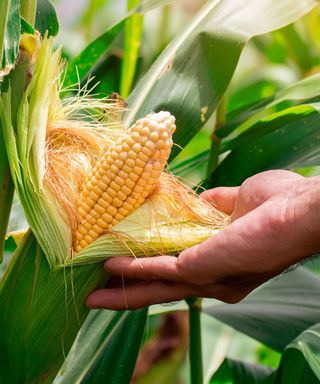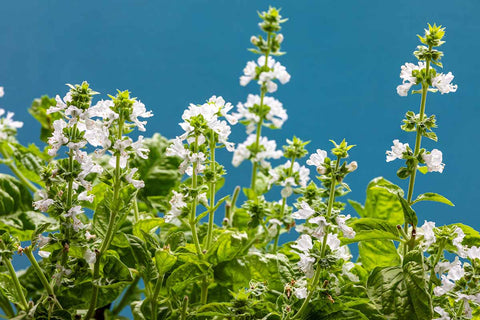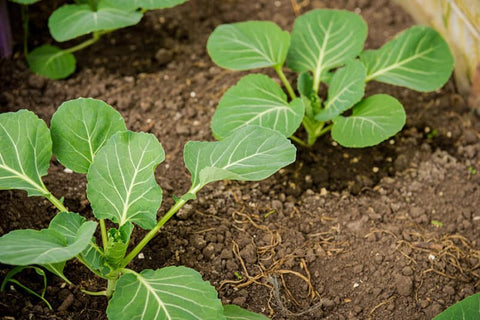Understanding the Importance of Fertilizer Labels
Gardening, whether as a hobby or a livelihood, involves more than just planting seeds and watering. The backbone of a thriving garden lies in the soil and, more specifically, in the nutrients provided to that soil. Fertilizer labels are a crucial guide, offering insight into what you're feeding your plants. Understanding these labels can transform your gardening results, making the difference between a mediocre and a magnificent garden.

Why Those Numbers Matter for Your Garden
The numbers on fertilizer labels might seem like a cryptic code at first, but they hold the key to unlocking your garden’s potential. These numbers indicate the balance of essential nutrients that plants need to grow strong and healthy. Knowing how to interpret these numbers ensures you give your plants the right nutrition at the right time, leading to lush foliage, vibrant blooms, and bountiful harvests.
Breaking Down the Basics
What Are the Numbers on Fertilizer Labels?
The numbers you see on a fertilizer label, such as 10-10-10 or 5-10-5, represent the percentage by weight of three primary nutrients: nitrogen (N), phosphorus (P), and potassium (K). These are always listed in the same order and are collectively known as the N-P-K ratio.
The N-P-K Ratio: An Overview
The N-P-K ratio provides a quick reference to the nutrient composition of the fertilizer. For example, a 10-10-10 fertilizer has 10% nitrogen, 10% phosphorus, and 10% potassium. Each of these nutrients plays a distinct role in plant health, and the right balance is essential for optimal growth.
Why N-P-K is Essential for Plant Health
Nitrogen, phosphorus, and potassium are vital for different aspects of plant development. Nitrogen promotes leafy growth, phosphorus is crucial for root development and flower production, and potassium enhances overall plant health and disease resistance. Without an adequate supply of these nutrients, plants struggle to thrive.
Nitrogen (N)
The Role of Nitrogen in Plant Growth
Nitrogen is a fundamental component of chlorophyll, the compound that plants use to photosynthesize and produce energy. It's also a building block of amino acids, the proteins that are essential for growth. Essentially, nitrogen fuels the green, leafy parts of plants.
Signs Your Plants Need More Nitrogen
If your plants are yellowing, particularly the older leaves, or if they seem stunted and lack vigor, they may be suffering from nitrogen deficiency. A lack of nitrogen often results in slow growth and poor foliage development.
Common Sources of Nitrogen in Fertilizers
Fertilizers may contain various sources of nitrogen, including urea, ammonium nitrate, and organic sources like blood meal and composted manure. Each type has its own release rate and application methods, offering flexibility depending on your gardening needs.
Phosphorus (P)
How Phosphorus Affects Root Development
Phosphorus is critical for the development of a strong root system. It helps plants transfer energy from sunlight to growth processes and is essential for flowering and fruiting. Without adequate phosphorus, plants may develop poorly anchored root systems and produce fewer blooms.
Identifying Phosphorus Deficiency in Plants
Plants deficient in phosphorus often exhibit dark green or purplish leaves, especially on the undersides. Flowering and fruiting may be delayed or diminished, and the overall growth rate can be sluggish.
Popular Phosphorus-Rich Fertilizers
Bone meal, rock phosphate, and superphosphate are common phosphorus-rich fertilizers. These materials are often used to support flowering plants and root vegetables, ensuring robust growth and abundant yields.

Potassium (K)
Potassium's Impact on Overall Plant Health
Potassium plays a multifaceted role in plant health. It regulates water uptake, improves disease resistance, and enhances the overall resilience of plants. Potassium also aids in the development of strong stems and helps plants tolerate stress from drought and temperature extremes.
Symptoms of Potassium Deficiency
Potassium deficiency can manifest as yellowing or browning at the edges of leaves, weak stems, and poor resistance to diseases. Plants may also show reduced growth and a lower ability to withstand adverse conditions.
Effective Potassium Fertilizers to Use
Common potassium sources include potassium sulfate, potassium chloride, and wood ash. These fertilizers help strengthen plants and improve their overall health and productivity.
Secondary Nutrients and Micronutrients
Beyond N-P-K: The Role of Secondary Nutrients
While N, P, and K are the primary nutrients, secondary nutrients like calcium, magnesium, and sulfur are also essential. They play supporting roles in plant structure, chlorophyll production, and enzyme function.
The Importance of Micronutrients for Plant Growth
Micronutrients, while required in smaller quantities, are critical for plant health. Elements such as iron, manganese, zinc, and copper contribute to various physiological functions and overall vitality.
Finding a Balanced Fertilizer
A well-balanced fertilizer provides a comprehensive mix of primary, secondary, and micronutrients. These blends ensure that plants receive all the essential elements needed for robust growth and development.
How to Read a Fertilizer Label
Decoding the N-P-K Numbers
Understanding the N-P-K numbers is the first step in selecting the right fertilizer. These numbers indicate the percentage of each nutrient, helping you determine the appropriate formula for your garden’s specific needs.
Understanding Percentage by Weight
The percentages on the label reflect the weight of each nutrient in the fertilizer. For example, in a 50-pound bag of 10-10-10 fertilizer, each nutrient (N, P, and K) contributes 5 pounds to the total weight.
Additional Information on Fertilizer Labels
Fertilizer labels also provide details on the types of nitrogen present, additional nutrients included, and application rates. This information helps gardeners use the product effectively and safely.
Choosing the Right Fertilizer
Matching Fertilizer to Plant Needs
Different plants have different nutritional requirements. Matching the fertilizer to the specific needs of your plants ensures they receive the optimal nutrients for growth and health.
Seasonal Considerations for Fertilizer Use
The needs of plants change with the seasons. Spring often requires higher nitrogen for growth, while flowering and fruiting plants in summer might need more phosphorus and potassium.
Organic vs. Synthetic Fertilizers
Organic fertilizers made from natural sources distribute nutrients gradually, improving soil health. Synthetic fertilizers, on the other hand, provide a quick nutrient boost but may not enhance soil structure.

Specialty Fertilizers
Slow-Release vs. Quick-Release Fertilizers
Slow-release fertilizers deliver nutrients over time, cutting down the need for frequent applications. Quick-release fertilizers offer immediate nutrient availability but may require more frequent use.
Liquid vs. Granular Fertilizers
Liquid fertilizers are easy to apply and quickly absorbed by plants, making them ideal for a rapid nutrient boost. Granular fertilizers are longer-lasting and often easier to measure and distribute.
Specialty Fertilizers for Specific Plants
Certain plants, like roses or tomatoes, have unique nutritional needs. Specialty fertilizers are formulated to meet these specific requirements, ensuring optimal health and productivity.
Common Fertilizer Myths
Debunking Popular Fertilizer Myths
There are many misconceptions about fertilizers, such as the idea that more is always better. Understanding the facts can help avoid common pitfalls and improve gardening success.
Understanding Over-Fertilization Risks
Over-fertilization can harm plants, leading to nutrient burn and environmental damage. It's important to apply the correct amount of fertilizer based on the plant’s needs and soil conditions.
The Truth About Organic Fertilizers
Organic fertilizers offer numerous benefits, but they’re not a cure-all. They work best as part of an integrated approach to soil and plant health, combined with other sustainable gardening practices.
DIY Fertilizer Options
Homemade Fertilizer Recipes
Creating your own fertilizers from household items like eggshells, coffee grounds, and banana peels can be an effective and economical way to nourish your garden.
Composting: Nature’s Best Fertilizer
Composting turns kitchen scraps and yard waste into nutrient-rich soil amendments. This sustainable practice enhances soil health and reduces waste.
Using Household Items as Fertilizers
Many common household items can serve as fertilizers. Epsom salts, for example, provide magnesium, while fish tank water can supply beneficial nutrients to plants.
Environmental Impact of Fertilizers
Understanding Fertilizer Runoff
Excess fertilizer can wash into waterways, causing environmental issues like algae blooms and water pollution. Responsible application practices help mitigate these impacts.
Sustainable Fertilizer Practices
Using organic fertilizers, practicing crop rotation, and applying fertilizers judiciously can enhance sustainability. These practices reduce environmental impact and promote long-term soil health.
How to Reduce Your Environmental Footprint
Minimizing fertilizer use, recycling garden waste, and choosing eco-friendly products contribute to a smaller environmental footprint and healthier garden ecosystems.

Troubleshooting Fertilizer Issues
What to Do When Fertilizer Doesn’t Work
If your plants aren’t responding to fertilizer, it might be due to improper application, incorrect nutrient balance, or soil health issues. Finding a remedy begins with diagnosing the problem.
Identifying and Correcting Fertilizer Burn
Fertilizer burn, caused by over-application, results in brown or scorched leaves. Flushing the soil with water and adjusting future fertilizer practices can help remedy this issue.
Adjusting Fertilizer Use for Problematic Soils
Different soil types require different fertilizer strategies. Sandy soils may need more frequent applications, while clay soils benefit from amendments that improve drainage and structure.
Future Trends in Fertilizer Technology
Innovations in Fertilizer Formulation
Advancements in fertilizer technology are leading to more efficient and sustainable products. Innovations include slow-release formulas and bio-based fertilizers that minimize environmental impact.
The Role of Technology in Precision Fertilization
Precision fertilization uses technology to apply the right amount of nutrients at the right time. Tools like soil sensors and GPS-guided equipment enhance accuracy and efficiency.
Predicting the Future of Sustainable Fertilizers
The future of fertilizers lies in sustainability. Emerging trends focus on reducing environmental impact, enhancing soil health, and supporting sustainable agriculture practices.
Understanding fertilizer labels and the role of N-P-K is essential for effective gardening. Applying the right fertilizers in the right amounts ensures healthy, vibrant plants.
Taking the time to understand fertilizer labels can transform your gardening experience. Armed with this knowledge, you’ll be better equipped to nurture your plants and enjoy the fruits of your labor.









